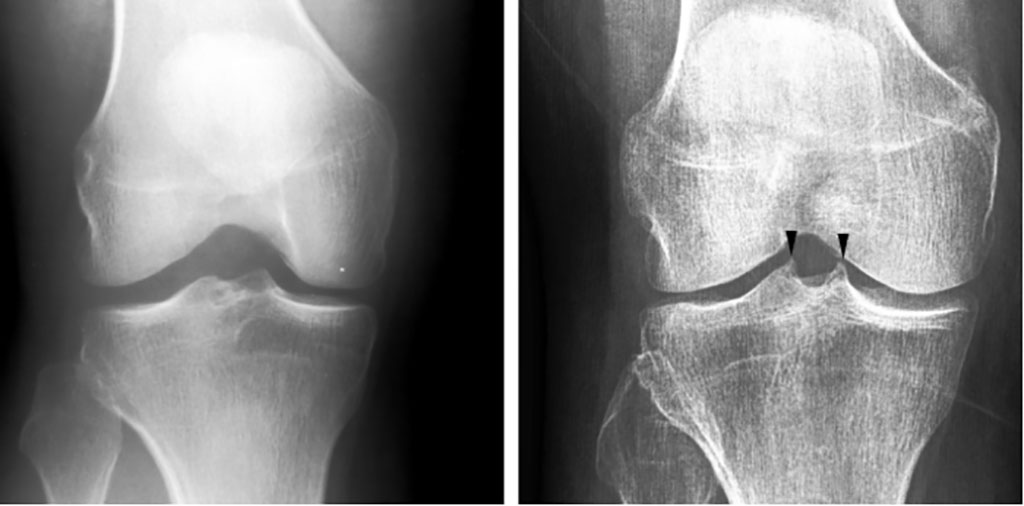AI Detects Early Knee Osteoarthritis from X-Ray Images
Posted on 16 Dec 2022
Osteoarthritis is the most common joint-related ailment globally and causes millions of medical visits every year in addition to burdening the economy. An early diagnosis can save the patient from unnecessary examinations, treatments and even knee joint replacement surgery. X-rays are the primary diagnostic method for early knee osteoarthritis. Now, researchers have developed an Artificial Intelligence (AI)-based neural network to detect early knee osteoarthritis from X-ray images.
The new AI-based method developed by researchers from the University of Jyväskylä (Jyväskylä, Finland) was trained to detect a radiological feature predictive of osteoarthritis from X-rays. The finding is not at the moment included in the diagnostic criteria, but orthopedic specialists consider it as an early sign of osteoarthritis. In practice, the AI tries to detect whether there is spiking on the tibial tubercles in the knee joint or not. Tibial spiking can be a sign of osteoarthritis. In an evaluation of the reliability of the method, the AI-based method was able to match a doctors’ diagnosis in 87% of cases. The development of AI models for diagnosing early osteoarthritis is active globally. The goal is that in the future, an AI would be able to detect early signs of knee osteoarthritis from X-rays, making it possible for the initial diagnosis to be made more often by general practitioners.

“The aim of the project was to train the AI to recognize an early feature of osteoarthritis from an X-ray. Something that experienced doctors can visually distinguish from the image, but cannot be done automatically,” explained Anri Patron, the researcher responsible for the development of the method. “Around 700 X-ray images were used in developing the AI model, after which the model was validated with around 200 X-ray images. The model managed to make an estimate of the spiking that was congruent with a doctors’ estimate in 87% of the cases, which is a promising result.”
“Several AI models have previously been developed to detect knee osteoarthritis. These models can detect severe cases that would be easily detected by any specialists,” said Sami Äyrämö, Head of the Digital Health Intelligence Laboratory at the University of Jyväskylä. “However the previously developed methods are not accurate enough to detect the early-stage manifestations. The method now being developed aims for, in particular, early detection from X-rays, for which there is a great need.”
“If we can make the diagnosis in the early stages, we can avoid uncertainty and expensive examinations such as MRI scanning,” added Juha Paloneva, CEO for Central Finland Health Care district and professor of surgery. “In addition, the patient can be motivated to take the measures to slow down or even stop the progression of the symptomatic osteoarthritis. In the best possible scenario, the patient might even avoid joint replacement surgery.”
Related Links:
University of Jyväskylä




 Guided Devices.jpg)









